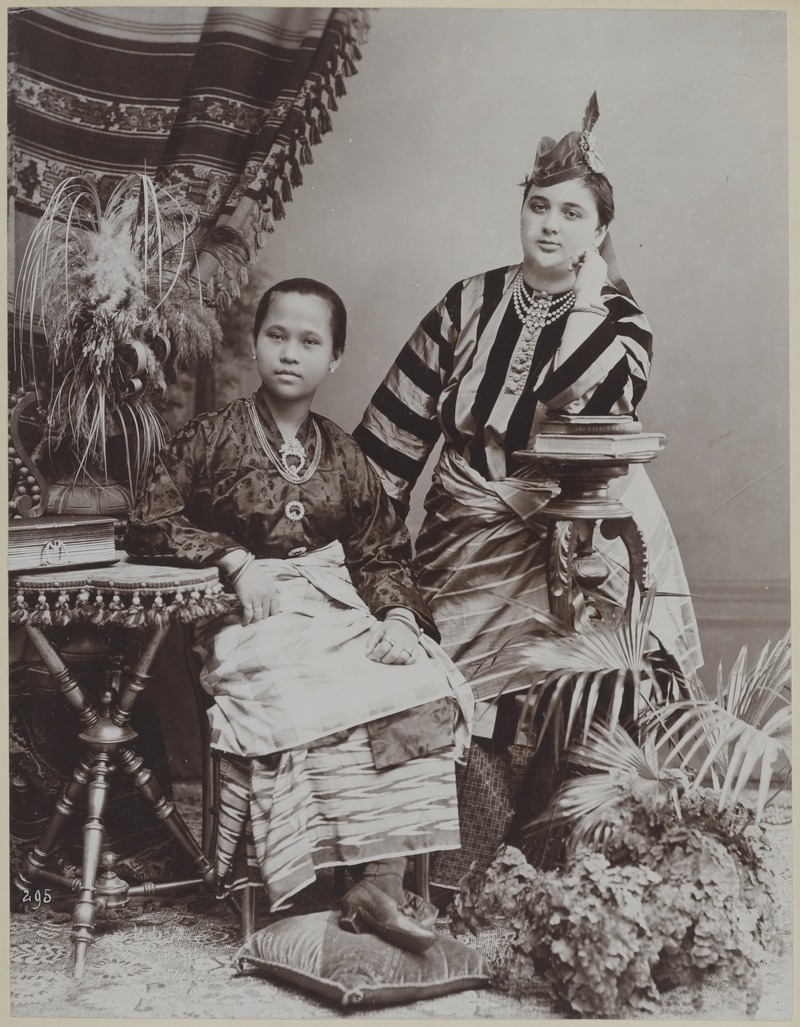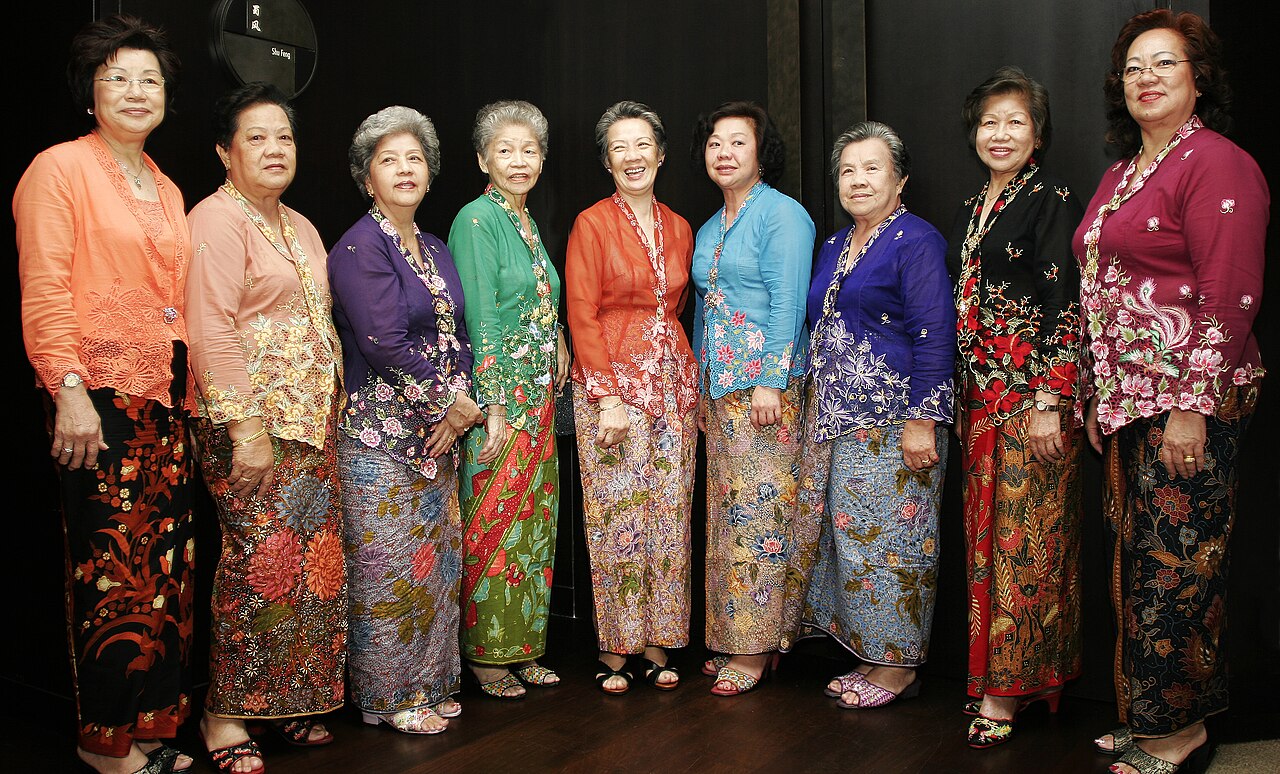It's been decided. Kebaya, a traditional Southeast Asian garment, is being nominated by Indonesia, Brunei, Malaysia, Thailand and Singapore for 2023’s UNESCO Intangible Heritage List. The five countries agreed to work together on this multinational nomination as the kebaya represents and celebrates the region’s rich shared history, promotes cross-cultural understanding and continues to be actively produced and worn by many communities across Southeast Asia.
Kebaya is a traditional blouse-dress worn by women in many Southeast Asian countries, including Indonesia, Malaysia, Singapore, and Brunei. This attire has a rich history that goes back several centuries and is deeply intertwined with the cultural traditions of the region. In this article, we will explore the historical perspective of the kebaya, focusing on how it reached many countries in Southeast Asia and the variations that developed over time.

The word "kebaya" is believed to have originated from the Arabic word "qaba," which means "robe" or "tunic." The kebaya was initially introduced to Southeast Asia during the Arab trade period. Merchants from the Middle East brought their clothing styles to the region, and the kebaya was adapted to suit the climate and cultural traditions of Southeast Asia.

The kebaya was later influenced by the European colonial powers, particularly the Dutch in Indonesia and the British in Malaysia. The Dutch colonial rulers in Indonesia encouraged the wearing of kebaya as it was seen as a symbol of cultural superiority. The kebaya then became associated with the upper classes and was worn during formal events and special occasions. In Malaysia, the kebaya was popularized during the British colonial period. The British colonial rulers encouraged the wearing of kebaya as a symbol of respectability and high status. The kebaya was then associated with the Nyonya community, a group of Chinese immigrants who settled in Malaysia during the 15th century.

As the kebaya spread throughout Southeast Asia, variations emerged depending on the region's cultural traditions. In Indonesia, the kebaya has become the national costume and is characterized by its long-sleeved design and delicate lace or embroidery. The kebaya is often paired with a sarong or batik skirt and worn during formal events and special occasions. The Javanese kebaya, in particular, is known for its loose-fitting style and intricate embroidery.

In Malaysia, the kebaya worn by the Nyonya community is more fitted and features delicate floral motifs. The Nyonya kebaya is often paired with a batik sarong and worn during weddings and other festive occasions. The kebaya worn by the Malay community in Malaysia is also more fitted and features baju kurung, which is a long skirt worn with a loose-fitting blouse.

The kebaya has also been adapted to suit different cultural traditions in Singapore and Brunei. In Singapore, the kebaya worn by the Peranakan community features intricate embroidery and beadwork, while the kebaya worn by the Malay community is more understated and elegant. In Brunei, the kebaya is often paired with a sarong and features a modern twist with contemporary designs and fabrics.
In Thailand, Kebaya is known locally as "suea phraratchathan," is a traditional blouse that has been an essential part of Thai women's wardrobe for centuries. The Thai kebaya has its roots in the Malay Archipelago, where it was first introduced to the region by the Portuguese and Dutch in the 16th century. Over time, it was adapted to the local culture and became an essential part of Thai traditional dress.

The Thai kebaya is typically made of lightweight, breathable fabrics, such as cotton or silk, and features intricate embroidery and beading. It is often paired with a long skirt or traditional Thai pants called "chong kraben." While the basic design of the Thai kebaya remains the same, it has undergone many variations over time. In the northern regions of Thailand, the kebaya is often made with brighter colors and heavier fabrics, while in the southern regions, it is often made with lighter, more delicate fabrics. The designs and patterns on the kebaya can also vary depending on the region, with some featuring floral motifs and others featuring geometric shapes.

In recent years, the kebaya has gained popularity in modern fashion. Many designers have incorporated traditional kebaya designs into their modern clothing collections, creating a fusion of traditional and modern fashion. This trend has helped to preserve and promote the traditional kebaya design and keep it relevant in modern times.
However, the kebaya is not just about aesthetics and fashion. It has deep cultural and social meanings that reflect the region's diverse history and ethnic diversity. The kebaya is often associated with specific events and occasions and is worn as a symbol of respect for tradition and elders. For example, in Indonesia, the kebaya is often worn during traditional ceremonies, such as weddings, engagements, and religious celebrations
Firman, Ismail. “The Kebaya: A Historical Perspective.” Tempo.Co, 15 Aug. 2018, en.tempo.co/read/920776/the-kebaya-a-historical-perspective.
Gill, Sarita. “Kebaya: A Dress that Defines Asian Women.” The National, 16 Dec. 2017, thenational.ae/lifestyle/fashion/kebaya-a-dress-that-defines-asian-women-1.683099.
Jasni, Siti Aisyah. “Malaysia: Kebaya: A National Dress.” Malaysia Asia, 3 Dec. 2018, www.malaysiaasia.com/2018/12/malaysia-kebaya-national-dress.html.
Kwek, Kimberly. “Kebaya: A Traditional Costume with a Modern Twist.” The Straits Times, 19 Aug. 2019, www.straitstimes.com/lifestyle/fashion/kebaya-a-traditional-costume-with-a-modern-twist.
Lubis, Nina. “The Kebaya: A Symbol of Indonesian Feminine Identity.” Indonesia Design, 8 Mar. 2018, www.indonesiadesign.com/story/the-kebaya-a-symbol-of-indonesian-feminine-identity/.
Widiastuti, Yetti. “The Kebaya: Indonesia’s National Dress.” Indonesia Expat, 1 Aug. 2018, indonesiaexpat.biz/featured/the-kebaya-indonesias-national-dress/.




















